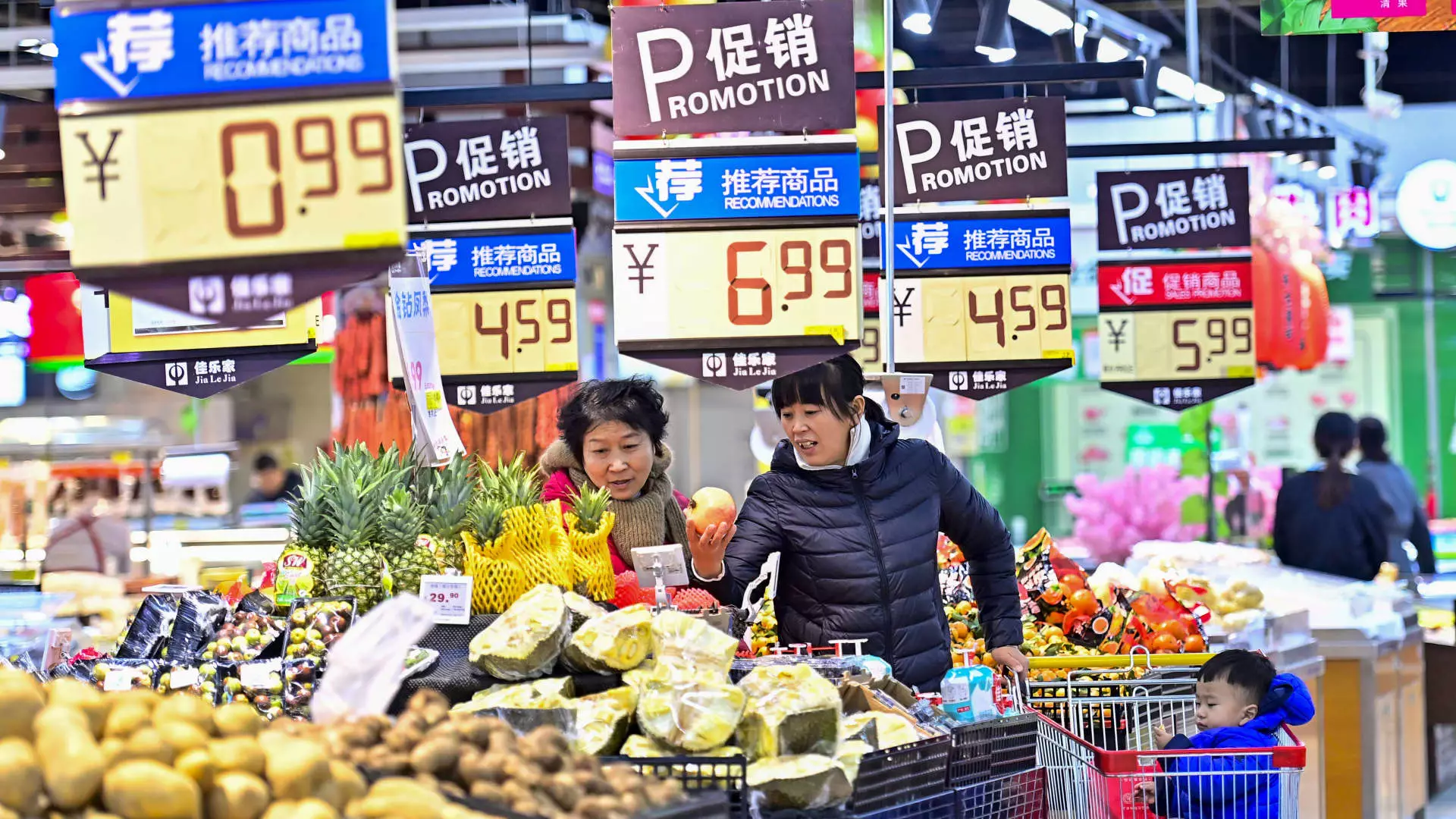In December, the landscape of China’s consumer price inflation painted a concerning picture, revealing a year-on-year increase of merely 0.1% as reported by the National Bureau of Statistics. This marked a decline from November’s inflation rise of 0.2%, raising alarms about the potential onset of deflation in the world’s second-largest economy. The stagnant state of consumer prices, coupled with persistent stagnation in domestic demand, poses serious questions regarding the effectiveness of recent government measures aimed at revitalizing economic activity.
The details behind the inflation metrics further underscore the tenuous situation. Core Consumer Price Index (CPI) figures, which strip out the volatile categories of food and energy, showed a marginal increase of 0.4%. In contrast, the preceding month listed a more modest 0.3% growth. These insights suggest that, while there is some resilience in consumer spending in non-essential sectors, the overall demand remains subdued.
Notably, December’s month-on-month CPI came in flat after a 0.6% decline the month before, signaling weak consumer interest. The food sector, a crucial element of CPI calculations, experienced a noteworthy 0.6% decrease month-on-month, largely driven by favorable weather conditions. However, a deeper analysis reveals that although prices for fresh vegetables and fruits saw a reduction of 2.4% and 1% respectively, pork prices—a staple in Chinese diets—downshifted by 2.1%. Analysts from ANZ Bank have forecasted that the persisting decline in pork prices may adversely affect headline CPI figures in 2025, highlighting how vulnerable the inflation index is to shifts in key food commodities.
Compounding the situation, the Producer Price Index (PPI) continued its downward trajectory, declining 2.3% year-on-year in December—marking the 27th consecutive month of decreases. Although this decline was slightly better than anticipated, it nonetheless reflects weakened industrial demand, particularly in sectors like construction and infrastructure, which have seen project delays during off-peak seasons. The halted activity in these areas resonates deeply with the broader economic narrative regarding sluggish domestic consumption.
In response to persistent economic woes, the Chinese government has introduced an array of stimulus measures since last September, such as interest rate cuts and increased bank lending. Furthermore, a recent initiative aimed to spur consumption through subsidies for upgrading old appliances has been launched. Economists like Louise Loo from Oxford Economics have expressed skepticism regarding these measures, labeling them as “quick fixes” devoid of lasting impact on the overall consumption landscape. The sentiments echoed by Shaun Rein of the China Market Research Group punctuate this outlook, as he questioned the sustainability of such programs, noting the limits of consumer demand—”How many air-conditioners can one family have?”
As the Chinese New Year approaches, consumers may feel the impulse to seek out bargains, further adding to deflationary pressures. Rein pointed out that the mentality of waiting for discounts could exacerbate sluggish spending habits. This reflects a broader consumer psychology where only significant discounts can trigger purchases—a danger that could deepen the economic malaise.
Despite the negative signals, there are fleeting indicators suggesting a potential recovery—mostly in manufacturing, which has seen a three-month expansion streak, albeit slowed down in December. Nevertheless, experts like Carlos Casanova from Union Bancaire Privée emphasize the challenges ahead due to weakened global trade relations and ongoing issues in the real estate sector.
Overall, while there are glimmers of recovery in specific economic areas, the situation requires cautious optimism. Continuous low inflation, coupled with reduced consumer spending, indicates that the road to recovery will likely be prolonged and fraught with obstacles. Loo’s expectation of subdued reflation underscores the challenges that lie ahead as China tries to navigate its way out of a quagmire of consumer apprehension and economic stagnation. The country’s onshore yuan recently hitting a 16-month low against the dollar only adds another layer of complexity, illustrating the intricate dynamics at play in China’s economic landscape.

Leave a Reply